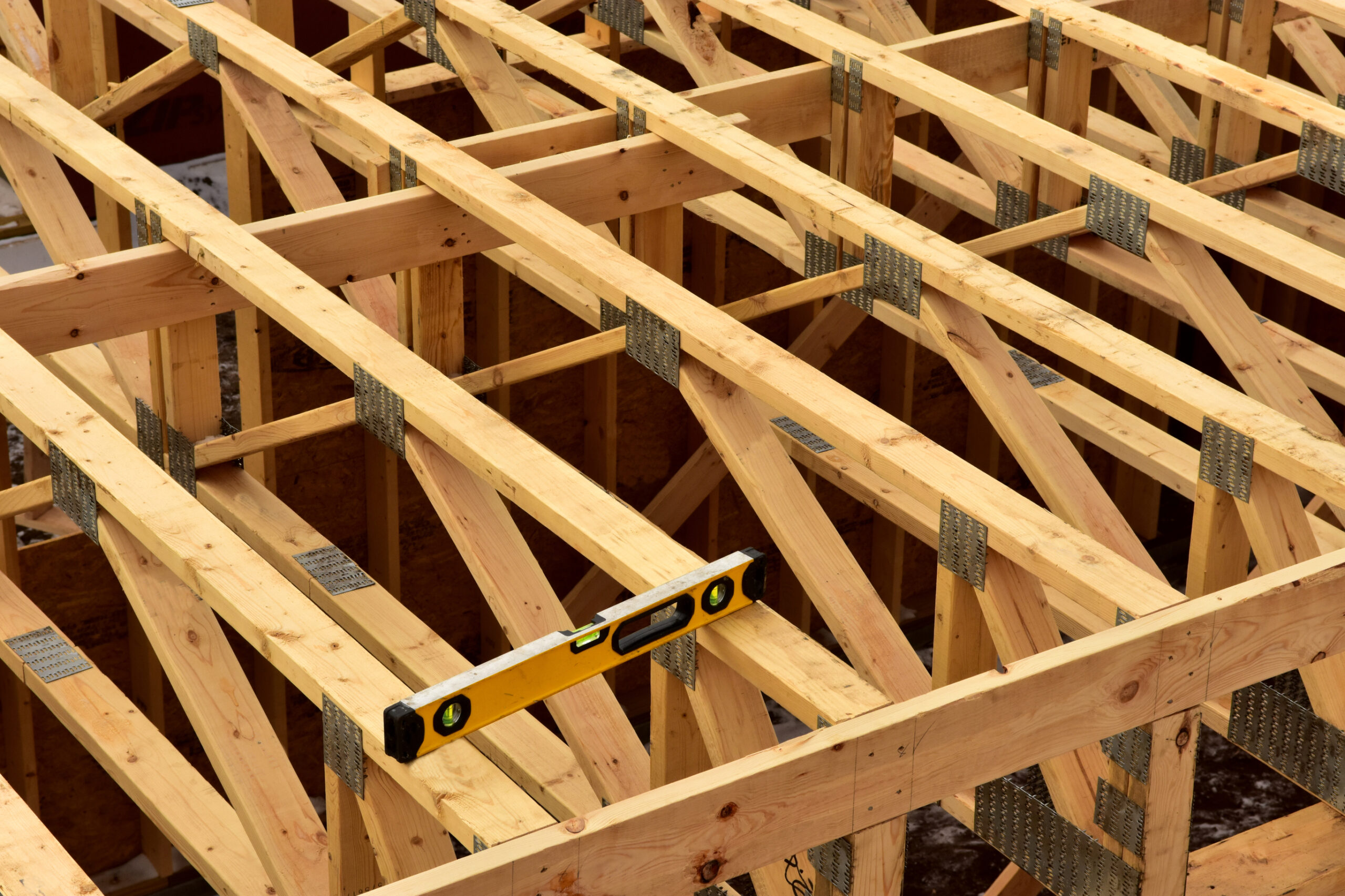How Do You Calculate Wood Beam Load Capacity: Ultimate Guide for Builders
To calculate wood beam load capacity, you need to determine the maximum weight the beam can support based on its species, size, and span length. A crucial aspect of construction or renovation projects involving wood beams is understanding their load capacity.
Determining the maximum weight a wood beam can support is essential to ensure structural integrity and safety. Calculating this capacity requires considering various factors, such as the species of wood, dimensions of the beam, and span length. This article will provide a clear and concise explanation of how to determine the load capacity of a wood beam, offering insights into the calculations involved and the significance of accurate measurements.
By following this guidance, you can make informed decisions when selecting and implementing wood beams in your construction projects, ensuring the safety and durability of your structures.

Credit: www.buildxact.com
Understanding Wood Beam Load Capacity
Calculating the load capacity of a wood beam is essential when determining if it can safely support certain structures or loads. The load capacity refers to the maximum weight a wood beam can bear without breaking or deforming. It is crucial to understand the factors that affect load capacity and the different types of wood beams available.
Factors Affecting Load Capacity
Several factors influence the load capacity of a wood beam. By considering these factors, you can accurately calculate the maximum weight the beam can support:
- Species and Grade of Wood: Different wood species and grades have varying strength properties. For example, Douglas fir is known for its high strength, making it a common choice for structural beams.
- Beam Configuration: The design and shape of the wood beam play a significant role in load capacity. Beams with larger dimensions, such as wider flanges or deeper sections, tend to have higher load capacities.
- Beam Span: The span, or distance between supports, affects the load capacity. Beams with longer spans generally have lower load capacities, as they experience greater deflection under load.
- Load Type: The type of load placed on the beam influences its capacity. Dead loads, such as the weight of the structure itself, are constant loads. Live loads, such as people or furniture, vary over time.
- Environmental Conditions: Factors like humidity, temperature fluctuations, and exposure to moisture can weaken the wood beam over time. Moisture content and the presence of any decay or insect damage can also decrease load capacity.
Types Of Wood Beams
Several types of wood beams are commonly used in construction projects. Each type has unique properties that influence load capacity:
| Beam Type | Advantages | Disadvantages |
|---|---|---|
| Solid-Sawn Beams | Durable and readily available. | Limited span capabilities compared to engineered beams. |
| Laminated Veneer Lumber (LVL) | High strength, consistent performance. | May be more expensive than other options. |
| Glued-Laminated Timber (Glulam) | Offers a variety of shapes and sizes, aesthetic appeal. | Requires careful design to prevent checking and cracking. |
| I-Joists | Lightweight and cost-effective. | May require additional material for lateral stability. |
By understanding the factors affecting load capacity and considering the various types of wood beams available, you can make informed decisions when it comes to selecting the right beam for your construction or renovation project.

Credit: www.woodworks.org
Calculating Load Capacity
Determining the load capacity of a wood beam is crucial when it comes to ensuring the structural integrity of a building or any load-bearing structure. By calculating the load capacity accurately, you can ensure that the wood beam can withstand the expected load without risking any potential safety issues.
This section will guide you through the process of calculating the load capacity of a wood beam step by step, covering important factors such as determining load requirements, evaluating beam strength, and considering load duration.
Determining Load Requirements
Before calculating the load capacity of a wood beam, you need to determine the specific load requirements of your project. This involves assessing the weight the beam will be supporting, as well as any additional factors that could impact the load, such as point loads or distributed loads. Point loads are concentrated forces acting on a specific spot, while distributed loads are spread out over an area.
To determine the load requirements, you can follow these steps:
- Identify the weight of the load or loads that the beam will support. It’s important to be precise and account for all potential loads, including people, furniture, and equipment.
- Consider any additional forces that may impact the load, such as wind or snow loads. These forces vary depending on your geographical location and design specifications.
- Calculate the total load by summing up all the individual loads and additional forces. This will give you the total weight that the beam needs to support.
Evaluating Beam Strength
Once you have determined the load requirements, the next step is to evaluate the strength of the wood beam. Different types of wood have varying load-bearing capabilities, and their strength is influenced by factors such as wood species, grade, size, and orientation. To evaluate the beam strength, consider these factors:
- Wood species: Different species have different strength properties. For example, oak beams are generally stronger than pine beams.
- Grade: The grade of the wood determines its quality and structural soundness. Higher grades typically indicate stronger beams.
- Size: The size of the beam directly affects its load capacity. Larger beams can generally support heavier loads.
- Orientation: The orientation of the beam refers to how it is installed. Beams are typically stronger in their vertical position than in their horizontal position.
By evaluating these factors, you can determine the inherent strength of the wood beam and get an idea of its load capacity capabilities.
Consideration Of Load Duration
Load duration is another crucial factor to consider when calculating the load capacity of a wood beam. Load duration refers to how long the load will be applied to the beam. Different loads have different durations, and this affects the beam’s ability to bear the weight sustainably. For example, permanent loads, such as the weight of the structure itself, have a longer duration, while temporary loads, like people walking on a beam, have a shorter duration.
When considering load duration, keep in mind that wood beams are typically designed to handle short-term loads. Prolonged exposure to heavy loads may cause the beam to deform or even fail over time. It is essential to take this into account when determining the total load the beam can safely support.
In conclusion, calculating the load capacity of a wood beam requires careful consideration of load requirements, evaluation of beam strength, and accounting for load duration. By following these steps and considering all the relevant factors, you can ensure the wood beam is properly designed and can withstand the intended load without compromising safety.
Selecting The Right Wood Beam
When it comes to calculating wood beam load capacity, selecting the right wood beam is crucial. Choosing the appropriate wood species and understanding sizing and dimension standards play a vital role in determining the load capacity of a wood beam.
Choosing The Appropriate Wood Species
There are various wood species available, each with different load-bearing capabilities. It’s essential to select a wood species that can withstand the anticipated load. Some common wood species used for beams include Douglas Fir, Western Red Cedar, and Southern Yellow Pine. These species offer a good balance of strength and cost-effectiveness for various applications.
Sizing And Dimension Standards
When sizing a wood beam, it’s important to adhere to industry standards. The American Wood Council provides guidelines for sizing and dimension standards based on the anticipated load and span. These guidelines consider factors such as dead load, live load, deflection limits, and more to ensure the beam can safely support the intended weight.
Additional Considerations
When calculating wood beam load capacity, additional considerations include factoring in the type of wood, the beam’s dimensions, and the span length. It’s important to also account for any potential additional loads or live loads the beam may need to support.
Load Distribution
When distributing loads on the wood beam, consider weight distribution evenly. Ensure proper balance to prevent overloading.
Beam Support And Connection
Proper support is crucial for beam load capacity. Secure connections and use appropriate fasteners.
In calculating wood beam load capacity, additional considerations play a vital role in ensuring the structural integrity of the support system.
Load distribution must be done evenly to prevent overloading the beam. Beam support and connection need to be secure and properly installed to handle the expected load.
Testing And Inspection
Testing and Inspection: Before determining wood beam load capacity, extensive testing and inspection are vital steps to ensure safety and reliability.
Quality Control Measures
Quality control measures involve regular testing and inspection of wood beams to assess their load capacity accurately.
Professional Inspection
Professional inspection by certified engineers guarantees that wood beam load capacities meet industry standards.
Implementing Safety Factors
Understanding Safety Margin
Safety margin is the added capacity incorporated into the design to ensure an extra level of safety. Structural engineers use safety margins to account for unknown variables and potential overloading. It acts as a buffer against unforeseen forces and protects against failure. The safety margin is typically expressed as a multiplier of the actual load. A higher safety margin indicates a more robust and safer design.
Application In Real-world Scenarios
In the real world, safety factors play a crucial role in ensuring the reliability and longevity of structures. For instance, in the construction of a bridge, factors such as weather, live loads, and seismic events are considered.
By implementing safety factors, engineers can anticipate these dynamic forces and reinforce the structure to withstand them. This approach helps to prevent failure and ensure the safety of the surrounding area and people using the structure.
Troubleshooting Load Capacity Issues
Calculate wood beam load capacity by considering the material type, dimensions, and support conditions. Troubleshoot load capacity issues with thorough calculations to ensure structural integrity. Evaluate factors such as span length and live loads for accurate load capacity determination.
Identifying Overloading Problems
When it comes to wood beam load capacity issues, identifying overloading problems is crucial. By recognizing signs of overloading, you can take proactive measures to address the issue before it leads to structural damage or safety risks.
Here are some telltale signs that indicate your wood beam is being overloaded:
- Sagging or deflection: If you notice visible deformations, sagging, or excessive downward bending of your wood beam, it could be a clear sign of overloading. Take immediate action to prevent further damage.
- Cracks or splits: Excessive loads can cause the wood beam to crack or split. Inspect your beam for any visible cracks or splits that may have occurred due to overloading.
- Noises or creaks: Unusual noises or creaking sounds coming from your wood beam could indicate that it is under excessive strain. Don’t ignore these warning signs.
- Improper installation: Incorrect installation of the beam can lead to overloading. Check if the beam has been installed according to the manufacturer’s guidelines.
- Excessive weight: Keep a record of the weight being applied to the wood beam. If it exceeds the recommended load capacity, it’s a clear sign of overloading.
Implementing Remedial Measures
Once you’ve identified overloading problems with your wood beam, it’s essential to implement remedial measures promptly. Failure to address these issues could lead to structural failure or other serious consequences.
Here are some remedial measures you can take to address load capacity issues:
- Reinforcement: Strengthen the wood beam by adding additional supports or reinforcing elements such as steel plates or brackets. This will help distribute the load more effectively.
- Reduce load: If possible, reduce the weight being applied to the wood beam. This could involve removing heavy objects or redistributing the load across multiple beams.
- Upgrade the beam: In some cases, upgrading to a higher load capacity wood beam may be necessary. Consult with a structural engineer to determine the appropriate size and strength for your specific needs.
- Improve installation: If the overloading issue is due to improper installation, reevaluate the installation process and make necessary adjustments to ensure the beam is properly supported and aligned.
By addressing overloading problems and implementing remedial measures in a timely manner, you can ensure the load capacity of your wood beam is optimized, minimizing the risk of structural damage and promoting the overall safety and stability of your construction project.
Conclusion And Recommendations
To determine wood beam load capacity, calculate using the beam’s material properties and loading conditions. Seek professional structural advice for accurate conclusions and safety recommendations. Consulting an engineer ensures appropriate beam sizing for structural requirements.
Calculating wood beam load capacity is essential to ensure the safety and structural integrity of your construction project. By following the best practices listed below, you can accurately determine the maximum load that a wood beam can support. Here’s a summary of the key points discussed in this article:
Summary Of Key Points
- Wood beam load capacity is determined by several factors, including the type of wood, beam size, span length, and the potential load it needs to bear.
- Calculating load capacity involves understanding the concept of bending moment, which depends on the applied load and the beam’s size and shape.
- You can calculate the maximum safe load capacity of a wood beam by using formulas such as the Euler-Bernoulli equation or consulting load capacity tables provided by engineering organizations.
- It’s important to obtain accurate and up-to-date information about the species and grade of wood you’re using, as these factors significantly impact load capacity.
- Special care should be taken when dealing with beams made of engineered wood products, such as glulam or laminated veneer lumber, as their load capacity may differ from traditional solid wood beams.
Best Practices For Load Capacity Calculation
When calculating wood beam load capacity, it’s crucial to follow these best practices:
- Identify the load requirements: Determine the specific loads the beam will need to support, such as dead loads (the weight of the structure and its permanent fixtures) and live loads (temporary weights like people, furniture, or equipment).
- Consult relevant codes and standards: Check the building codes and local regulations, as they provide guidelines for load calculations and safety factors.
- Use accurate measurements: Measure the beam’s dimensions, including its length, width, and height, precisely to ensure accurate load capacity calculations.
- Consider the beam’s orientation: Load capacity calculations may differ depending on whether the beam is used vertically (as a column) or horizontally (as a joist or rafter).
- Factor in safety margins: Applying appropriate safety factors ensures a margin of safety in case of sudden or unforeseen loads or accidental misuse of the structure.
- Seek professional assistance if needed: If you’re unsure about the calculations or load capacity requirements, consult a structural engineer or a qualified professional for guidance.
By following these best practices, you can confidently calculate the load capacity of wood beams and ensure the safety of your construction projects. Remember, accurate load capacity calculations are vital for maintaining the structural stability and longevity of any wooden structure.
Frequently Asked Questions For How Do You Calculate Wood Beam Load Capacity
How To Determine The Required Wood Beam Size?
To calculate the wood beam size, evaluate the load requirements, span length, and wood species. Refer to engineering tables or use online calculators for accurate results.
What Factors Influence Wood Beam Load Capacity?
The load capacity of a wood beam is affected by the wood species, beam dimensions, grade, and span length. Understanding these factors is crucial for a safe and structurally sound design.
Is It Necessary To Consider Dead Load In Load Capacity Calculation?
Yes, considering the dead load, which includes the weight of the beam itself, is essential for accurate load capacity calculations. Neglecting the dead load can lead to structural inadequacies and safety hazards.
Conclusion
Understanding wood beam load capacity is crucial for safe construction projects. By considering factors like the species and grade of wood, as well as beam size and span, you can determine the load capacity. Always consult engineering professionals for accurate calculations to ensure structural safety and compliance with building codes.







